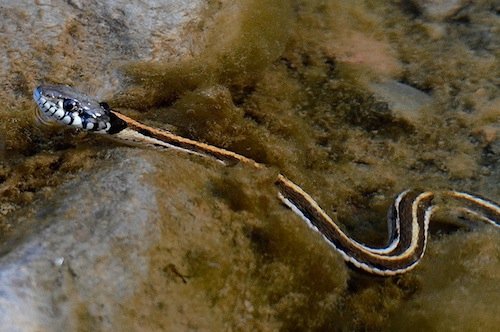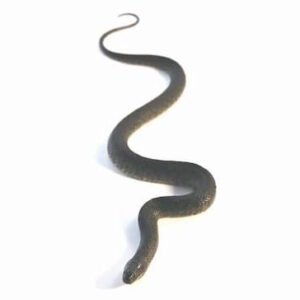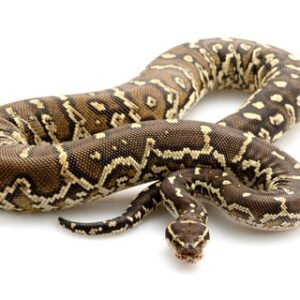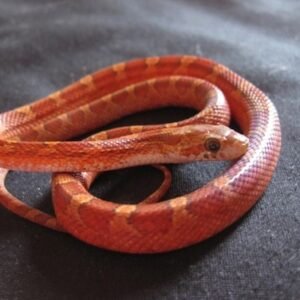Physical Characteristics and Habitat
The black neck garter snake, scientifically known as Thamnophis cyrtopsis, exhibits a variety of distinctive physical characteristics that contribute to its adaptability. Primarily, this snake is recognizable by its striking black neck, which serves as a critical identification feature. Its coloration generally includes shades of green and brown, complemented by subtle patterning that helps with camouflage in its natural surroundings. The ventral side typically appears lighter, providing a stark contrast against the dorsal shades, which aids in visual concealment from predators. Adult black neck garter snakes can reach lengths of approximately 60 to 90 cm, with females often being larger than males. This size allows them to evade threats while also being agile hunters.
The unique markings on their bodies are not only critical for identification but also play a significant role in their survival. These markings assist in blending into their environments, whether they are navigating through dense vegetation or resting along the banks of water sources. The color patterns are a significant evolutionary advantage within their habitats, allowing these snakes to remain undetected as they hunt for prey, such as amphibians and small fish.
Black neck garter snakes thrive in diverse habitats, typically favoring wetland areas, grasslands, and proximity to freshwater sources. These environments offer a plethora of resources necessary for hunting and breeding. Wetlands provide an abundant supply of prey and create favorable conditions for reproduction, with shallow waters serving as prime locations for laying eggs. Additionally, the presence of grasses and shrubs within these habitats offers cover from both predators and harsh climatic conditions. Overall, the physical attributes of the black neck garter snake, along with its preferred habitats, contribute significantly to its role as an adept predator in nature.
Behavior and Diet of the Black Neck Garter Snake
The black neck garter snake (Thamnophis cyrtopsis) exhibits a range of behavioral traits that characterize its interaction with the environment and other species. This species is primarily diurnal, meaning that it is most active during the day. The snake is known for its agile movements, often seen quickly gliding through vegetation or swimming in shallow waters while foraging for prey. Its ability to adapt its hunting techniques is noteworthy; it employs a sit-and-wait strategy as well as actively pursuing prey. This dual approach allows the black neck garter snake to capitalize on its surroundings, making it an effective predator.
In addition to its hunting techniques, the black neck garter snake demonstrates significant social interactions, particularly during the mating season. Males often engage in combat dances to establish dominance and attract females. These social behaviors are crucial for reproduction and play a role in maintaining the population dynamics of the species. The black neck garter snake often shares its habitat with other reptiles and amphibians, demonstrating a level of coexistence that is fundamental to the ecosystem.
Feeding primarily on amphibians, fish, and small invertebrates, the black neck garter snake maintains a balanced diet that reflects its ecological niche. Its preferred prey includes common frogs and small fish species, which are abundant in freshwater habitats. The snake’s foraging behavior is facilitated by its acute sense of sight and chemical sensing, enabling it to detect and capture prey effectively. As both a predator and prey, this species plays a significant role in the food web, contributing to the regulation of prey populations while also serving as a food source for larger predators, such as birds of prey and mammals.
Overall, the black neck garter snake exhibits remarkable adaptations that enhance its survival and ecological significance. Its adept hunting techniques, social interactions, and varied diet make it a vital component of its ecosystem, showcasing the complex relationships present in nature.





